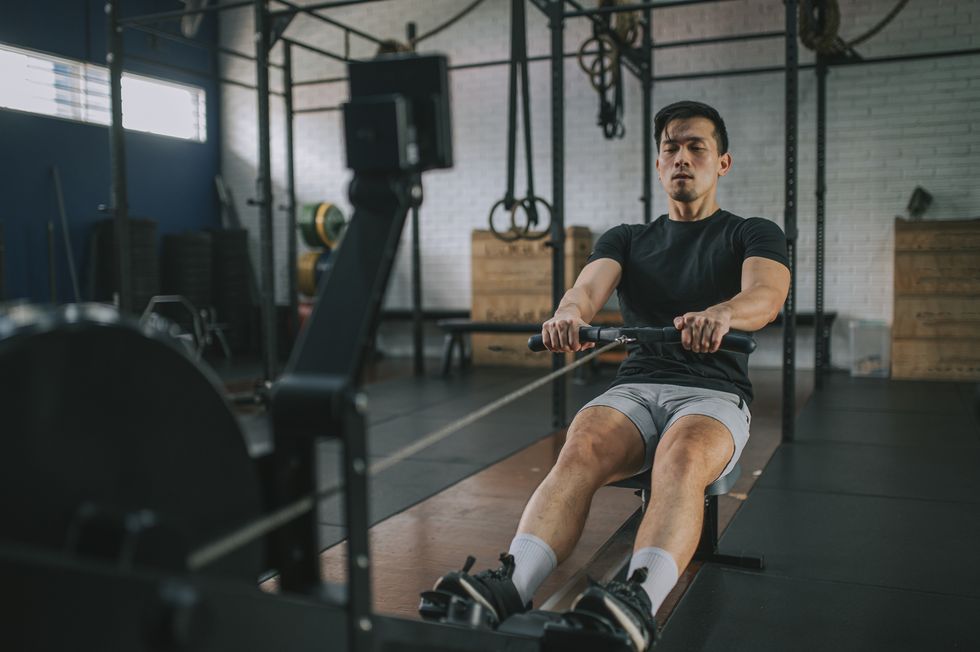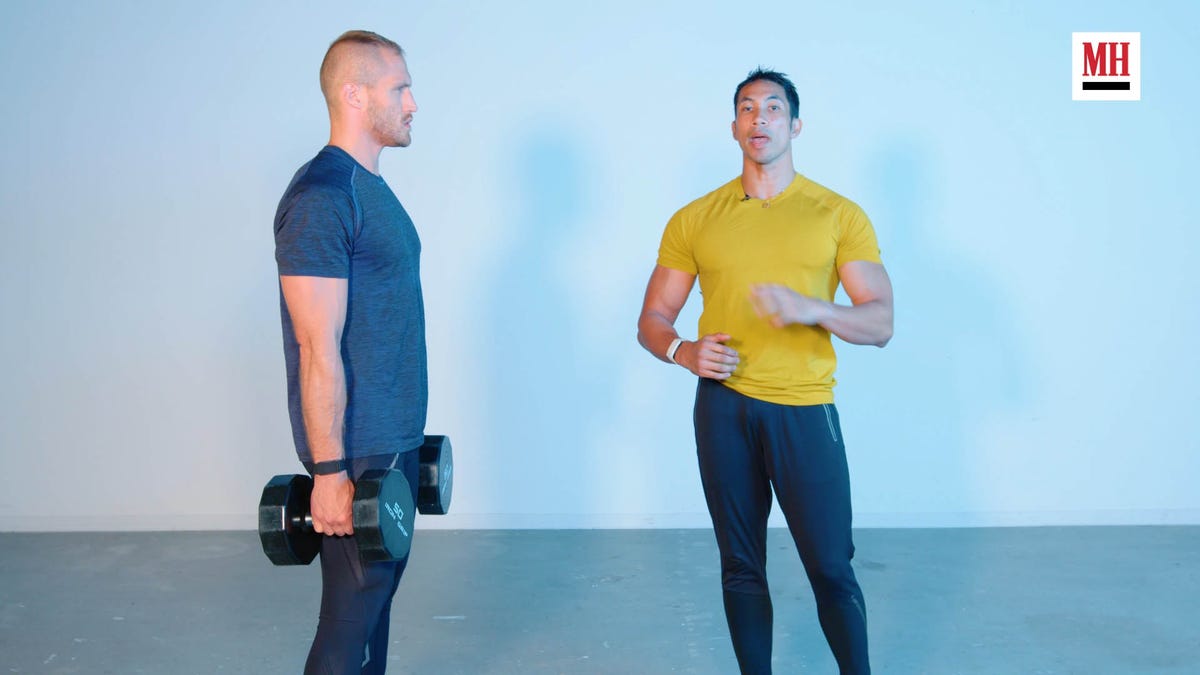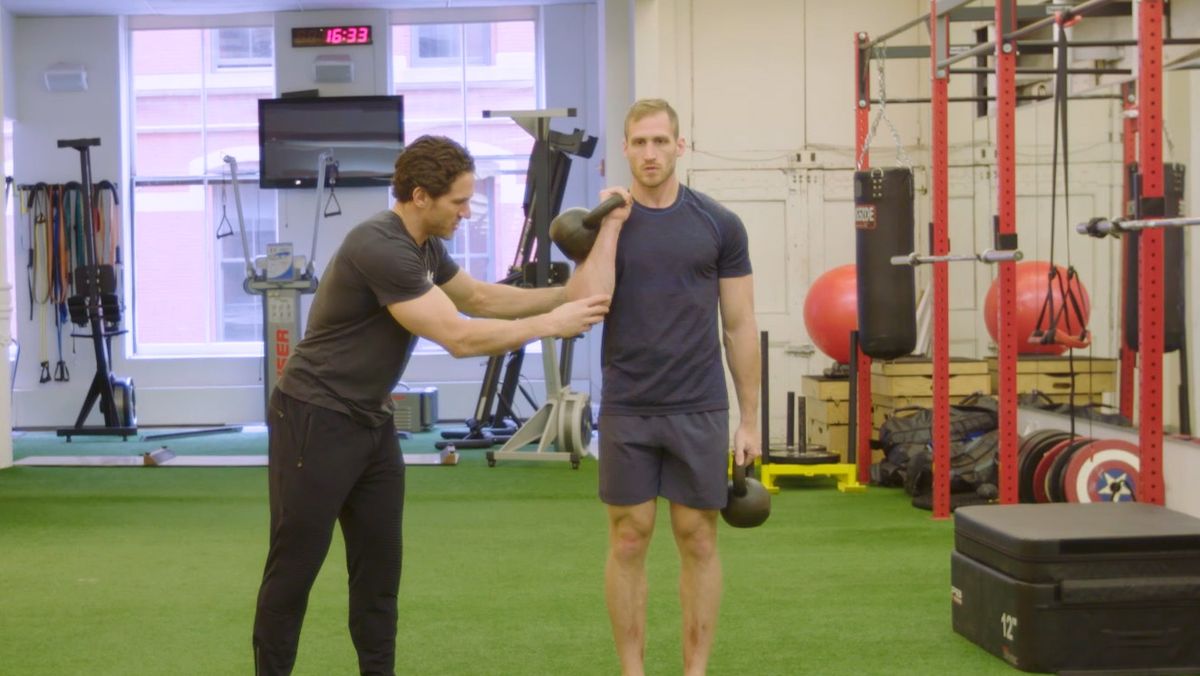[ad_1]
WHEN YOU’RE TRYING to lose weight, burn belly fat, or pay penance for an epic pile of nachos, you might lace up your gym shoes with one thing in mind: calories. You want to burn them, and lots of them—fast.
But if you’re looking for the absolute, number one calorie-burning move or workout you can do, there’s no single, energy-torching solution, says Brad Schoenfeld, Ph.D., C.S.C.S.*D, professor of exercise science at CUNY Lehman College.
“Ultimately, there is no best exercise. There is no best time,” he says. “There’s an interaction between duration and intensity. If you’re doing high intensity, you won’t be able to do it as long.” And vice versa.
In a meta-analysis of 56 studies published in November 2021, Schoenfeld and other scientists found that whether exercisers chose medium-intensity steady state cardio, high-intensity interval training, or sprinting, they lost the same amount of fat when the work done—the intensity and time—were matched. So lower intensity activities done for longer burned off the same amount of fast as higher-intensity moves done for shorter periods.
So the specific exercises, workout routines, or cardio modalities that will burn the most calories for you, Schoenfeld says, depend on just that: you.
Here’s how Schoenfeld and Men’s Health, fitness director Ebenezer Samuel, C.S.C.S. break down the math on how different types of exercise use calories, dispel some misconceptions about post-workout calorie burning, and suggest four ways you can dial up your energy expenditure when you’re looking for the most bang for your calorie buck.
Max Calories Burned: What the Averages Say
Of course, certain types of exercise do burn more calories, minute by minute, than others. According to the USDA’s Dietary Guidelines for America, a 154-pound person running or jogging at 5 mph, or bicycling at 10 mph, will burn an average of 590 calories per hour. This is listed as the most vigorous activity on the document’s chart. Other activities, like hiking, burn 370 calories per hour, while walking at 4.5 miles per hour clocks in at 460 calories per hour.
The American Council on Exercise (ACE) provides a tool that includes more than 50 different activities, estimating calorie burn based on your body weight and the duration of the activity. According to this calculator, the same 154-pound person will burn 733 calories in an hour doing vigorous rowing on an erg machine. They’ll burn 698 calories in an hour of vigorous swimming.
Here’s the catch: You may not be able to do these movements for the full hour period, or even close to it. In some cases, you may be able to do more than an hour. That’s where the intensity versus duration equation Schoenfeld mentioned comes into play: By these averages, you’ll burn 122 calories rowing for 10 minutes, versus 93 calories running 12-minute miles. But you’ll probably be more likely to be able to jog that pace for 20 minutes. In that case, you’ll burn more during the run.
These numbers are also averages, points out Samuel. Depending on how often you perform these activities, you might burn fewer calories than the average when running, or more calories than average when rowing or swimming.
“One of the biggest things is efficiency,” he says. If you run a lot, you’re going to run more efficiently, meaning you’ll be burning fewer calories than if you’re working out in a way that’s novel to you. A bout on a rower that you’re not used to, or a high-intensity circuit filled with exercises you’re not good at, will challenge your muscles and heart more because you’re not performing as well as you possibly could. And like an inefficient engine, you’ll burn more fuel—more calories—than one that’s more efficient.
What About HIIT? Don’t You Keep Burning Calories All Day?
One way to do lots of exercises you can’t do efficiently is in a high-intensity interval training (HIIT) setting. But in addition to the calorie boost that may be provided by swapping lots of strides for squats and burpees, you may have heard that HIIT is superior for calorie burning because you don’t just burn during the session—but you’ll keep burning more calories all day.
The concept is called excess post-exercise oxygen consumption, or EPOC. The idea is basically that while steady-state cardio stops burning calories the moment you end your workout, HIIT revs your calorie-burning engine so high that it stays hot for hours after you’ve stopped your sweat session. The additional calories burned during this EPOC, in theory, would mean that even a short HIIT session burns more calories in the long run than, well, a long run.
The problem, Schoenfeld says, is that EPOC isn’t as powerful as it’s sometimes billed as being.
“There is EPOC with high-intensity interval training, because the body has to be returned to homeostasis,” he says. When you put your body through something extreme, it takes energy to bring it back to normal. “But the magnitude of EPOC amounts to, like, 40 calories [over the course of 24 hours]. It’s pretty negligible in terms of meaningfulness.”
In a 2019 review article from the Scandinavian Journal of Medicine & Science in Sports, scientists found that the difference in EPOC after a session could be between 40 and 100 calories, but that most people studied would burn more calories while doing steady state cardio than they would doing HIIT—because they could sustain the exercise longer, and would do so.
HIIT and sprint interval training, or SIT, can also provide additional calorie burn through muscle protein synthesis (MPS), Schoenfeld says. MPS is the same process that’s triggered by strength training when you build muscle: When MPS occurs, your body incorporates amino acids into your muscles. Your body requires energy to perform the MPS process, so this process itself burns additional calories. And HIIT and SIT, like strength training, triggers MPS to a greater extent than continuous aerobic exercise.
If you’re doing HIIT in addition to strength training, however, it’s not clear that the MPS is additive, Schoenfeld says. You’re already getting MPS (and its calorie-burning boost) from lifting. Adding in HIIT may not add more MPS calorie burn to your equation, so the bonus burn may not happen.
One more potential effect of HIIT and SIT has less to do with the workouts and more to do with what else you do during the day. Emphasizing quick bursts might play a part in your lowering your overall activity level. One major source of calorie burning is called non-exercise activity thermogenesis, or NEAT. This includes all the moving that you do outside your workout: Walking, fidgeting, picking up laundry, and just generally moving around. Differences in NEAT have been found in some studies to result in differences of 2,000 calories burned each day.
“There is some evidence that higher durations and intensities of exercise reduces your NEAT,” Schoenfeld says. So if you overdo it trying to burn extra calories by going extra hard, you might actually sabotage your overall calorie burning goals.
4 Ways to Maximize Your Calorie Burn
Maximizing calorie burn is all about topping out the equation of intensity times duration. It’s also all about not getting hurt in the process, Samuel says, so that you can keep coming back for more. While a high-intensity circuit full of exercises you’re terrible at might be the type of inefficient, calorie torching routine you’re looking for, it might also leave you injured.
“You want to be able to safely push yourself,” he says.
Use these four strategies to shift the time and intensity variables in your energy-burning favor, and let you be ready for the next calorie-torching session.
Choose a Safely Sustainable Exercise
A high-intensity, total body exercise—like a clean and press—might burn more calories than any other in a single rep. But you can’t perform the move for a long enough duration to build up a significant calorie burn compared to less demanding movements.
That doesn’t mean your calorie-burning exercise has to be cardio, Samuel says. Resistance training sessions at a faster pace (this means shorter rest periods, not herky-jerky movements), exercises like farmer’s carries, and other strength workouts can let you elevate your heart rate for a period that’s significant for your daily burn.
Another variable to consider: Choosing an exercise you like. Since one of the variables for calorie burn is duration, picking something you enjoy may make it easier to sustain over the long haul.
Add a Load to Make Your Exercise More Difficult
Impacting calorie-burning intensity isn’t just about speed: Adding weight can be simpler and more sustainable.
“It’s basic math, right? If one person is doing a farmer’s carry with five-pound dumbbells, and another is doing them with fifty-five pound dumbbells, the second guy is going to burn more calories,” Samuel says.
This can even be applied to longer distance walking. According to the U.S. Army, a 180-pound soldier walking 6 kilometers at a 4 mph pace with a 35-pound pack will burn 680 calories. Without the pack, the same guy would burn an average of 410 calories.
Find ways to make your palatable, sustainable moves less efficient and more strenuous: Walk with a weighted vest. Run up hills. Put more weight on the bar or in the sandbag.
Find Ways to Be Inefficient
One problem with choosing moves that you like and are able to easily load, Samuel says, is that they’re probably also the ones you’re most efficient at performing. That’s great from a performance aspect—but as we’ve discussed, inefficiency can mean more calorie burning.
That doesn’t mean you have to throw out your favorite, sustainable activities, though. Just find ways to make them novel.
If you like farmer’s carries as a calorie-torching workout finisher, as Samuel does, mix them up: Try holding one weight out to the side instead of directly at your side. Hold a heavier weight in one hand and work to stay balanced. Or hold one weight overhead, and the other at your side.
Pick Exercises That Are Easy to Work Hard
The final key to intensity is pushing yourself, Samuel says. Because if you load up a sustainable, efficient, exercise, but then don’t keep at it? You’re not getting the duration or the intensity.
“The person who does a heavy farmer’s walk, and kind of lollygags around, and therefore literally covers less ground, is going to burn fewer calories,” he says. “If that person goes a quarter-mile, they’re burning less calories than if someone goes a half-mile.”
That’s a function, he says, of how hard you’re willing to go. But you can cheat this by choosing exercises that you can’t complete without your full focus. To maximize intensity during your calorie-burning session, choose exercises that can’t be lollygagged, but require higher intensities just to be completed.
“Focusing on things like kettlebell swings, or even leg day exercises, works,” he says. “You have to attack those exercises with intensity, unlike, say, five sets of crunches or something like that.”
Mix and match these four variables—sustainability, heavy loads, inefficiency, and required intensity—and you’ll find your ultimate calorie-burning exercises. Once you do, push yourself to finish through. After all, you will be the deciding factor.

Greg Presto is a fitness and sports reporter and videographer in Washington, DC.
[ad_2]




